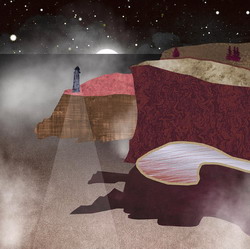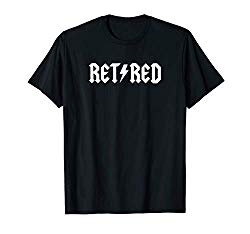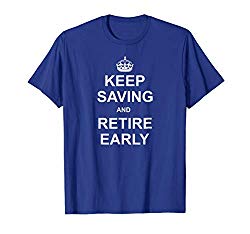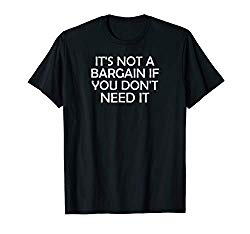The Broadband Gap In America
Not long ago I did a post about working from home. Specifically, I highlighted a Bloomberg article showing that many workers are quitting instead of going back into the office. I’m all about sticking it to the man when necessary.
As I said in that post, I’ve been contemplating what I’d do if my employer demanded me back and to be frank I’m not sure. It’s one of those things that would just have to happen for me to have a clue how I’d really react.
While there’s been a ton of discussion about working from home on the net and in the news, there’s been way less about a precursor to being able to do it. That is, having access to a decent internet connection.
Many readers, especially in wealthy areas of the country or world, may have just scratched their head and said “What!? You mean there are people who don’t have access to a good internet connection?”
Yes, as weird as it may sound to some, it’s very true. Tools like Zoom and Skype which many jobs and schools have been relying on usually require a broadband connection.
While the vast majority of Americans have access to an internet connection, more than you probably think do not have access to or are not currently receiving a broadband connection of sufficient speed to work or school their kids from home.
Leave it to me to find some cool interactive mapping tools that show where there are gaps in broadband coverage in America.
What Is Broadband?
You may be asking right off the bat, what is defined as broadband speed?
The Federal Communications Commission defines broadband internet as at least 25 megabits (mbs) per second for downloads and 3 megabits per second for uploads. If you are a technical person, you know that these are actually pretty slow speeds. Most of the country has access to these speeds since old-school DSL and even some phone lines can meet them.
But even if we stick by the underwhelming FCC guidelines, which are widely criticized, why is there a gap? In short, the FCC doesn’t see much of a problem because their own reports of who has access to these speeds come from data from the providers themselves. And of course the providers are going to paint the best scenario possible. How about measuring what speeds folks are actually getting?
If you’re not aware, there are plenty of sites to check instantly what speeds you’re getting. But can this be done on a broad scale? If you get help from the major cloud providers it can. Here’s how the Verge describes their data source, which comes from Microsoft:
Instead of the FCC’s data, we drew on an anonymized dataset collected by Microsoft through its cloud services network, published in increments by the company over the past 18 months. If the FCC monitors the connections that providers say they’re offering, this measures what they’re actually getting.
So the Verge created a map of the broadband gap based off data from a company that does not provide internet service. Let’s just say I trust it more. That said, let’s look at the map.
The Broadband Gap Map
When you open the map, you’ll see a basic view of the country with all counties colored either white or blue.
This map is as simple as they come – if the county is blue that means fewer than 15 percent of households in that county are getting broadband speed. Simply hover your mouse over any county to see the percentage value for that county.
Note – if a county is blue it doesn’t necessarily mean they don’t have access to broadband speed. Most internet providers have different service tiers and undoubtedly many consumers are choosing to pay less for slower speeds. I’m sure this is because the cost of higher speeds is often just too high.
It’s also true that in other cases consumers are paying for 25mbs or higher but not actually getting those speeds as measured by Microsoft.
Looking at the geographic patterns, like seemingly everything in America lines are largely drawn between poor counties and wealthy ones. There’s a lot more blue counties in the deep South, and you can even follow a blue line of Appalachia that traces roughly from Tennessee up to Northeast Pennsylvania, with some gaps.
Also of note, many large and very sparsely populated counties such as those in northern Nevada and Alaska are blue, but that’s no real surprise.
The FCC’s Map
It turns out the FCC themselves have an interactive map. If you go to theirs you are immediately prompted to enter an address before you can navigate.
If you do enter an address you’ll be presented with the number of internet providers for that address. This is very handy if you’re considering geoarbitrage as presumably you’d want to know how many options you have for internet connectivity.
To avoid entering an address and to just explore, click the “Location” button an the map will change to this:
That interface shows the whole country divided by county and color coded for the number of internet providers in each. The results you get when you click a county also tell you if they’re a satellite provider or a landline provider, as well as the download and upload speeds offered in that location.
You can also get this information at BroadbandNow.com by zip code instead of county. Zip codes are usually smaller and will be more precise, but the BroadbandNow site gives the information mostly by list only. They have some rough state-based maps but I prefer the county-wide mapping interfaces because I’m a map dork.
Department Of Commerce
The U.S. Department of Commerce’s National Telecommunications and Information Administration (NTIA) also has a slick interactive map showing broadband needs In America at the census tract and even census block level. (*2022 update – this site is now behind a login wall)

Click on a county on the map and you’ll see:
- the percentage of households without internet access,
- the percentage of households without a computer, tablet, or smartphone,
- the median M-Lab internet speed
- the median Ookla internet speed
- percentage of downloads completed Over 25 Mbps or higher according to Microsoft
If you zoom to the county you can then see a more detailed geographic look at census tracts, and if you zoom in real far you can get to the census blocks. That is a very detailed level!
Broadband Is Important
We’re used to having access all of the worlds information on the internet. Increasingly that information comes in video and larger content types, and requires good connectivity. Broadband access to the internet is crucial in 2021. The Verge described it this way:
If broadband access was a problem before 2020, the pandemic turned it into a crisis. As everyday businesses moved online, city council meetings or court proceedings became near-inaccessible to anyone whose connection couldn’t support a Zoom call. Some school districts started providing Wi-Fi hotspots to students without a reliable home connection. In other districts, kids set up in McDonald’s parking lots just to get a reliable enough signal to do their homework. After years of slowly widening, the broadband gap became impossible to ignore.
One shouldn’t have to go to a McDonald’s parking lot to do their homework, that’s ridiculous. We need to eliminate the broadband gap.
Elon Musks’s SpaceX company is currently deploying a system called Starlink which if successful in its completion aims to provide broadband intent access to the entire planet.
They do offer service to some areas now including some near me, you can check if you have access here. I am 100% behind this effort as I believe knowledge and access to it should be available to every human on the planet.
Geoarbitrage
So there you have it financial warriors, a few mapping tools that give you valuable data on broadband internet access and more. Any consideration of a geoarbitrage move in the information age should take into account whether an area or a specific house has access to good high speed and affordable internet connectivity. Additionally, if you’re a real estate investor and want to make sure a prospective property has good internet access, these tools are invaluable.
I post lots of tools like this that show various aspects of money and finance from a location perspective.
Also be sure to check out my Geoarbitrage Resources Page that has tons of great tools to help you find your perfect location.
I hope you find these resources handy and I will continue to expose valuable tools that can help when deciding on a geoarbitrage strategy.













































Amazing maps Dave! And it’s frightening how many people don’t have broadband these days. Hopefully Starlink will solve some of that problem! I’ve heard good reviews of it so far.
Yes its something that most well-off folks don’t even consider or think is possible. And as much as he’s hated by so many, I’m all for Elon’s venture.
It is very nonintuitive who has fast internet and who doesn’t. I live in rural Arkansas and we got fiber internet here five years before my brother did in a Houston, TX suburb. I currently get 400 Mbps and he gets 50 and I live out in the woods, while he is in a subdivision packed with thousands of homes.
I agree Steve, there are some wacky situations that fly in the face of what you’d expect. I live in the area with the highest median incomes in America (the D.C. area) and I have exactly one choice for non-satellite broadband at my house. The current satellite dish operators suck and are unreliable if a few raindrops start falling. So my provider is a quasi monopoly.
i hope we get some competition for broadband near my house in the future. fios is all around but not in the few blocks where our house resides. rotten spectrum really is too expensive ($80) compared to what others in the country pay.
one thing i enjoy is our mountain cabin rental in the adirondacks has fantastic internet somehow.
FIOS is not available in my area either, and I have one land-based choice. Go Elon!
Interesting…..Spectrum says I’m paying for 200Mbps. When I click on the speed test link you provided above it only shows 20Mbps. Having a speed of 20 sounds super slow. But here’s the thing, I’m not actually experiencing any problems. One kid plays online video games nonstop live with his friends. Two other kids stream shows on their phones. We have two TV’s that stream Netflix and others. And then I’m working from home and doing Teams calls and videos through the whole day. All of it works well, so I’ve been happy with the speed. But 20Mbps sounds so slow. Wonder if I’m the one misinterpreting something.
Hmmm, it could have bee a temporary blip of slower speeds. My provider is not consistent and gets quite slow at peak times of the day.
Good stuff and even better tools as always. As someone who lives in a “Blue” county with my “internet connection” consisting of a 2-bar Verizon hot-spot off my phone, I can’t wait for Starlink! I put my deposit in and it should go live sometime next month! People who live in metro areas have no clue how bad it can be, at least I didn’t prior to moving farther afield.
Oh man, having to tether off a phone with 2 bars, that sucks! I hope to retire to a rural/mountainous area one day but I’ll be sure it’s an area with screaming connection!
My Dad lives on a farm in a blue county and it is bad there. Lots of hotspotting if you are lucky enough to have service. He is involved in the local economic development commission and has heard numerous times that people want to move and work in the area but they cannot entertain the idea without internet.
That’s sad to hear, and with the vast spaces and distances in America I think the only solution is Starlink or a similar satellite provider. I hope he can get that service soon!
There are more issues than speed. For those of us with limited options, data caps are a real issue. Many service providers start throttling speeds once you hit a limit, often 50 Gb or so. That goes fast when you’re working from home and using any type of streaming service. We just moved to a blue county and the 10gbps service there is infinitely better since it’s uncapped and doesn’t have a traditional satellite delay.
Man that’s a great point. From what I can see none of these maps give info on download caps etc. It’s something I’ve never dealt with so it didn’t occur to me. Thanks very much for bringing that up!
5G should help many of these areas, right?
We have Comcast, possibly the most hated company in America.
The map said I can also use Century Link. Maybe I should give them a call.
I would think 5G could eliminate most of these problem areas but it has been very slow to roll out and I suspect poor areas will be ignored by the big companies, as they always are. And I have Comcast as well and yes, the hate is real.
Thanks for the comment Joe!
This is great! You don’t realize the importance of a good internet connection until you’re somewhere that doesn’t have one. Interesting that it somewhat mirrors the electoral college map.
I hope I’m never in a place that doesn’t have one, and also hopefully Starlink will make that impossible one day.